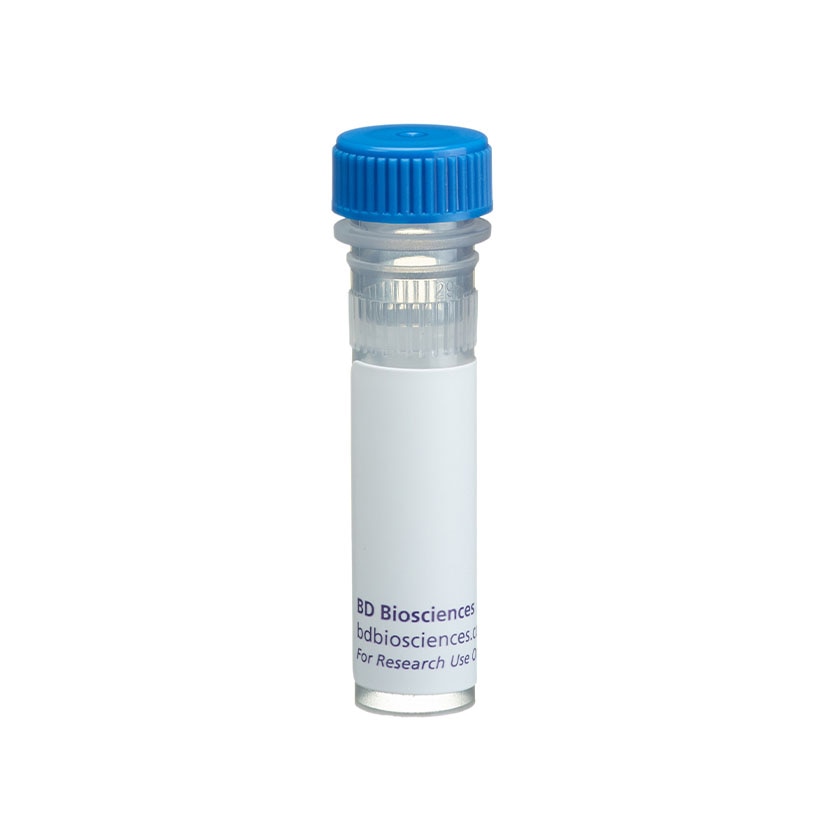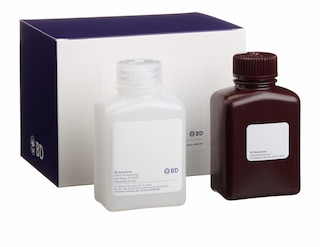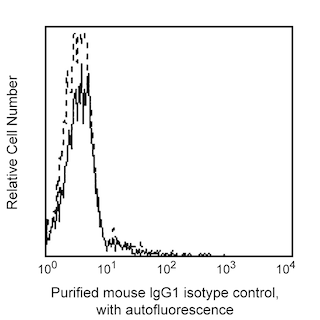-
Your selected country is
Middle East / Africa
- Change country/language
Old Browser
This page has been recently translated and is available in French now.
Looks like you're visiting us from {countryName}.
Would you like to stay on the current country site or be switched to your country?




Profile of intracellular staining of Jurkat cells fixed and permeabilized with Cytofix/Cytoperm (Cat. No. 554714) and analyzed on a FACScan (BDIS, San Jose, CA)


BD Pharmingen™ Purified Mouse Anti-Human CD107b

Regulatory Status Legend
Any use of products other than the permitted use without the express written authorization of Becton, Dickinson and Company is strictly prohibited.
Preparation And Storage
Product Notices
- Since applications vary, each investigator should titrate the reagent to obtain optimal results.
- Please refer to www.bdbiosciences.com/us/s/resources for technical protocols.
- Caution: Sodium azide yields highly toxic hydrazoic acid under acidic conditions. Dilute azide compounds in running water before discarding to avoid accumulation of potentially explosive deposits in plumbing.
Companion Products


.png?imwidth=320)
The H4B4 monoclonal antibody specifically binds to CD107b. CD107b is a heavily glycosylated, ~120 kDa type I transmembrane protein that is also known as lysosomal-associated membrane protein 2 (LAMP-2/LAMP2), LAMPB, or LGP110. CD107b is expressed in the lysosomal and endosomal membranes of most cell types where it may play a role in maintaining membrane integrity. CD107b is also expressed on the surface of activated platelets and lymphocytes, including T lymphocytes, e.g., degranulating CD8+ cytotoxic T cells. CD107b serves as a ligand for selectins, including E-selectin, and mediates cellular adhesion. CD107a/ LAMP-1 and CD107b /LAMP-2 are carriers for poly-N-acetyllactosamines, and display the sialyl Le[x] antigen. CD107b is likewise expressed on some tumor cells and cell lines, including U937 and KG1a, and may facilitate tumor metastases.
Development References (4)
-
Chen JW, Cha Y, Yuksel KU, Gracy RW, August JT. Isolation and sequencing of a cDNA clone encoding lysosomal membrane glycoprotein mouse LAMP-1. Sequence similarity to proteins bearing onco-differentiation antigens. J Biol Chem. 1988; 263(18):8754-8758. (Biology). View Reference
-
Febbraio M, Silverstein RL. Identification and characterization of LAMP-1 as an activation-dependent platelet surface glycoprotein. J Biol Chem. 1990; 265(30):18531-18537. (Biology). View Reference
-
Sawada R, Lowe JB, Fukuda M. E-selectin-dependent adhesion efficiency of colonic carcinoma cells is increased by genetic manipulation of their cell surface lysosomal membrane glycoprotein-1 expression levels. J Biol Chem. 1993; 268(17):12675-12681. (Biology). View Reference
-
Schlossman SF. Stuart F. Schlossman .. et al., ed. Leucocyte typing V : white cell differentiation antigens : proceedings of the fifth international workshop and conference held in Boston, USA, 3-7 November, 1993. Oxford: Oxford University Press; 1995.
Please refer to Support Documents for Quality Certificates
Global - Refer to manufacturer's instructions for use and related User Manuals and Technical data sheets before using this products as described
Comparisons, where applicable, are made against older BD Technology, manual methods or are general performance claims. Comparisons are not made against non-BD technologies, unless otherwise noted.
For Research Use Only. Not for use in diagnostic or therapeutic procedures.
Report a Site Issue
This form is intended to help us improve our website experience. For other support, please visit our Contact Us page.